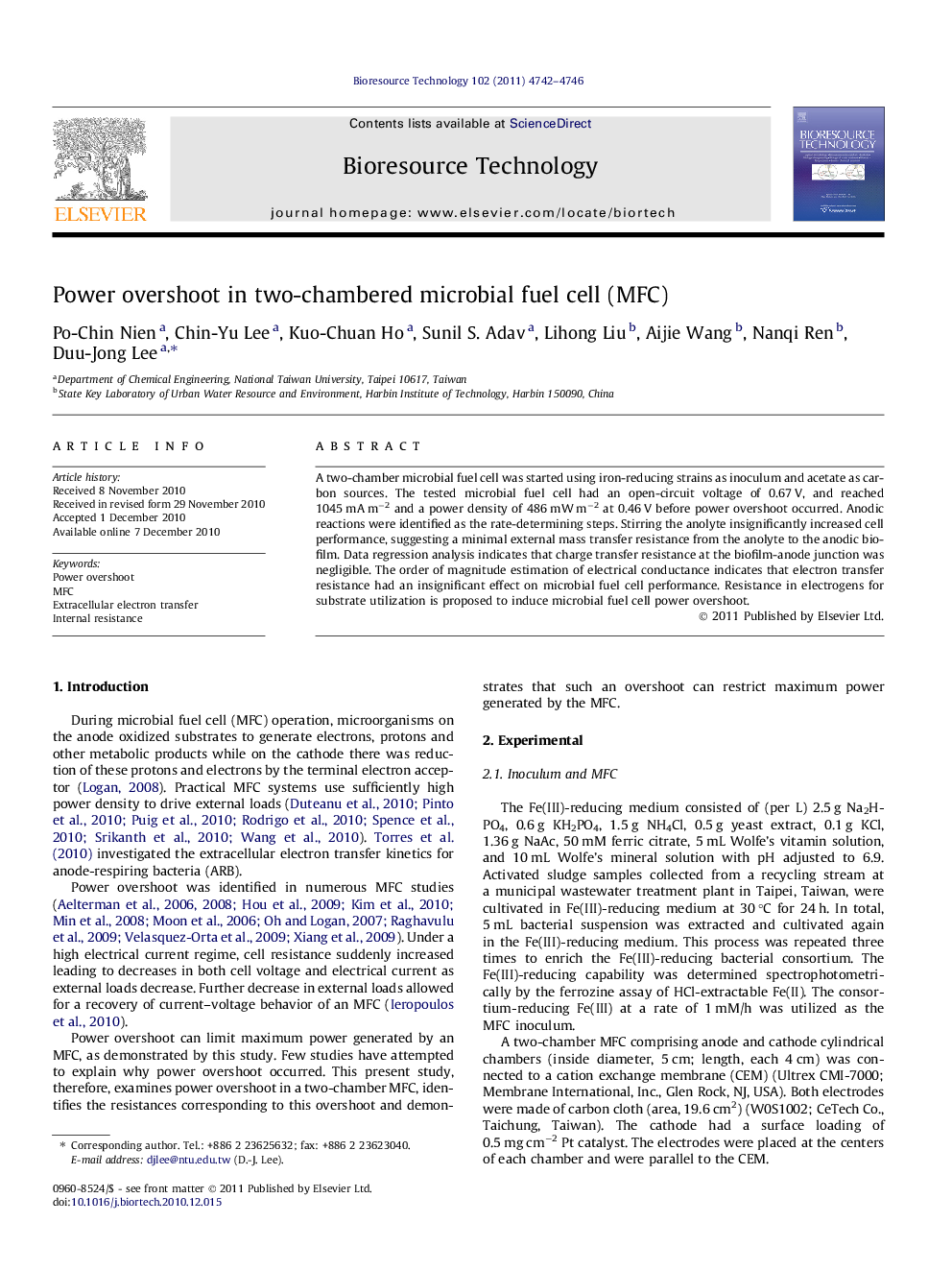| Article ID | Journal | Published Year | Pages | File Type |
|---|---|---|---|---|
| 10395184 | Bioresource Technology | 2011 | 5 Pages |
Abstract
A two-chamber microbial fuel cell was started using iron-reducing strains as inoculum and acetate as carbon sources. The tested microbial fuel cell had an open-circuit voltage of 0.67Â V, and reached 1045Â mAÂ mâ2 and a power density of 486Â mWÂ mâ2 at 0.46Â V before power overshoot occurred. Anodic reactions were identified as the rate-determining steps. Stirring the anolyte insignificantly increased cell performance, suggesting a minimal external mass transfer resistance from the anolyte to the anodic biofilm. Data regression analysis indicates that charge transfer resistance at the biofilm-anode junction was negligible. The order of magnitude estimation of electrical conductance indicates that electron transfer resistance had an insignificant effect on microbial fuel cell performance. Resistance in electrogens for substrate utilization is proposed to induce microbial fuel cell power overshoot.
Related Topics
Physical Sciences and Engineering
Chemical Engineering
Process Chemistry and Technology
Authors
Po-Chin Nien, Chin-Yu Lee, Kuo-Chuan Ho, Sunil S. Adav, Lihong Liu, Aijie Wang, Nanqi Ren, Duu-Jong Lee,
